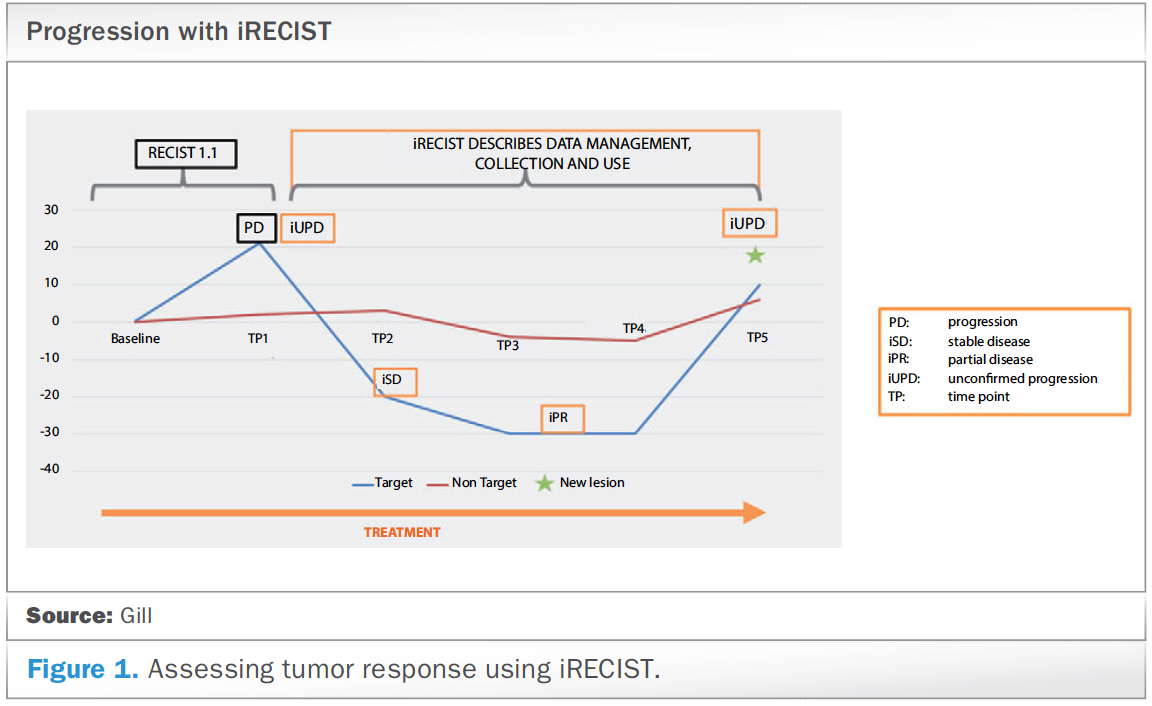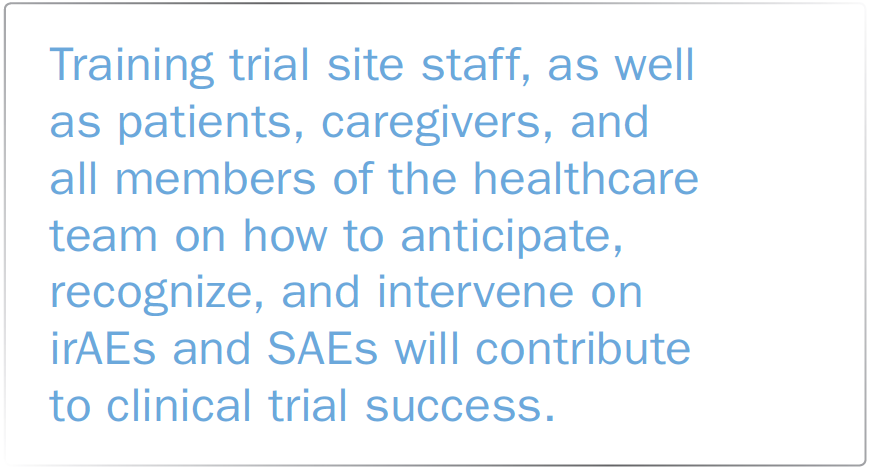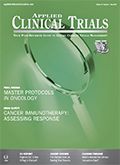Maximizing Immuno-Oncology Clinical Trial Success
Applied Clinical Trials
Examining the unique standards and related challenges when assessing the safety and efficacy of cancer immunotherapy candidates.

Immuno-oncology is a unique approach to cancer treatment that leverages the body’s immune system to help fight cancer. Immuno-modulating agents such as interleukin-2 (IL-2) and interferon (IFN) have been used in the treatment of some solid malignancies for years, but their use has generally been limited to cancers that are immunogenic, such as melanoma and kidney cancer.
More recently, immune checkpoint inhibitors have changed the landscape of immunotherapy, and emerging therapies in cancer such as chimeric antigen receptor T-cells (CAR-T), dendritic cell vaccines, and bi-specific T-cell engager (BiTE) antibodies are pushing the envelope even further.
In 2016, the cancer immunotherapy market was estimated to be $41 billion, and it is expected to grow to nearly $119 billion by 2025.1 Small and midsized biopharmaceutical companies will play a critical role in this growth, but will need to overcome critical hurdles that are inherent in developing immunotherapeutic agents. Because immunotherapy innovations work differently than chemotherapy, they require different standards for evaluating their safety and effectiveness. Understanding these standards-and the other major challenges of immuno-oncology studies-is critical to clinical trial success.
Evaluating response to cancer immunotherapies
When evaluating oncology drugs, four distinct response patterns are generally associated with favorable overall survival:2
1. Response in baseline lesions
2. Stable disease with slow decline in tumor volume
3. Response following an initial increase in tumor volume
4. Response following the appearance of new lesions
Traditionally, response and efficacy with oncology agents has been measured by a set of published rules known as Response Evaluation Criteria in Solid Tumors (RECIST). However, these criteria do not easily apply to immuno-oncology agents because of the kinetics of the anti-tumor response associated with them. Unlike conventional cytotoxic therapies that may trigger rapid tumor shrinkage due to direct killing of cancer cells, immuno-oncology drugs stimulate immune cell responses that may take several months to occur. As a result, patients may exhibit an initial increase in tumor burden followed by tumor shrinkage, a phenomenon called the flare effect.
For example, ipilimumab is an anti-cytotoxic T-lymphocyte-associated antigen (CTLA)-4 antibody approved for treatment of advanced melanoma. As many as 10% of patients treated with ipilimumab who were scored with progressive disease using modified World Health Organization (WHO) criteria for tumor size were shown to achieve disease stabilization and improved overall survival.3 Clearly, only applying RECIST criteria to immunotherapy trials can result in:
- Premature termination of therapy
- Unnecessary removal of patients from clinical trials
- Inaccurate interpretations of treatment response
A new set of rules: iRECIST
Due to the unusual pattern of treatment response associated with immuno-oncology drugs, a number of new response criteria have been developed, including immune-related response criteria (irRC), which is based on WHO criteria, and immune-related RECIST (irRECIST), which combines elements of irRC and RECIST.
In 2017, a new set of irRC was proposed by a RECIST working group comprised of members of industry, academia, the FDA and the European Medicines Agency (EMA). This consensus guideline-called Immune RECIST (iRECIST)-standardizes and validates immune response criteria to aid in decision-making regarding continuation of therapy in clinical trials.
iRECIST calls for the use of modified RECIST in cancer immunotherapy trials and describes a standardized approach to measuring solid tumors and defining objective change in tumor size for clinical trials.4 iRECIST also introduces a new response criterion known as immune unconfirmed progression of disease (iUPD), which describes new overall response.
With iRECIST, the bar for progression resets if RECIST-defined progressive disease (PD) is followed at the next time point (TP) by tumor shrinkage, as seen in TP2 in Figure 1.
Click to enlarge

iRECIST has not yet been validated and should not be used as a guideline for treatment decisions. RECIST is still the gold standard for defining treatment response-based endpoints in solid tumors for pivotal registration trials. However, iRECIST can be used in conjunction with RECIST in later-phase studies, and may be used as primary response criteria in exploratory, early-phase studies.
Sponsors of cancer immunotherapy drugs who want to use iRECIST guidelines in their studies should train their operational team and communicate closely with the data and safety monitoring board (DSMB) to ensure that all stakeholders understand that these agents work differently than cytotoxic therapies.
Validating biomarkers
Current patient response rates and toxicities associated with immunotherapies have created a sense of urgency to determine which patients would most benefit from these agents. This may require companion diagnostic tests, including biomarkers and genetic sequencing data. To date, the biomarkers for immunotherapy include immunohistochemistry, flow cytometry, and next-generation sequencing, each of which has its pros and cons.
The identification of immune-specific biomarkers will help to fill knowledge gaps by providing valuable predictive and prognostic information, as well as insights on the underlying mechanisms of treatment response and resistance. This would enable development of personalized treatment plans and inform the design of combination therapies.
A major hurdle to the identification and development of clinically relevant biomarkers is the fact that immune modulation affects many cell types and involves complex interactions among the host, cancer cells, and tumor microenvironment.5 The Society for Immunotherapy of Cancer (SITC) Biomarkers Task Force has published a series of white papers on the validation process and regulatory considerations associated with biomarkers in immunotherapy, as well as novel technologies and emerging biomarkers relevant to individualized cancer therapy.
Finding the right combination
Cancer treatment is undergoing a radical transformation in which conventional cancer drugs are being integrated with immunotherapeutic agents. For example, combined inhibition of programmed cell death 1 pathway (PD-1/PD-L1) and CTLA-4 in melanoma and non-small cell lung cancer (NSCLC) highlights the potential of combination therapies to further enhance the clinical benefits of monotherapies.
Many clinical trials are evaluating the potential synergistic effects associated with immunotherapy drug combinations. Currently, the established anti-tumor activity of PD-1/PD-L1 inhibition as monotherapy in a spectrum of cancers-coupled with its favorable toxicity profile-provides a strong rationale for its use as a backbone for combination treatments.
However, it has been shown that substantive incremental toxicity can result from immunotherapeutic combinations, depending on the patient population, dose, and schedule utilized. For example, a Phase I study combining ipilimumab with vemurafenib, a Raf inhibitor, in patients with melanoma showed significant increases in toxicity at standard dosing. This highlights the importance of flexible approaches to dose and schedule optimization. Combination therapies require not only rigorous clinical testing early in clinical development, but also the willingness to accept the use of non-standard doses or schedules of individual agents to maximize the overall risk-benefit profile.6
For sponsors, identifying the best candidate drug to combine or compare with an investigative agent can be challenging-and, sometimes, prohibitively expensive. Finding the right combination and comparator, at the right price, can be the difference between success and failure. In addition, sponsors should ensure that they have manufacturing resources and secure chains of custody for their candidate immunotherapies to support their clinical trials.
Identifying adverse events
Especially with the shift toward combination immunotherapy, it is becoming increasingly important for sponsors and investigators to be adept at recognizing, characterizing, and monitoring immune-related adverse events (irAEs) and other serious adverse events (SAEs).

In general, immunotherapy agents demonstrate unique safety profiles that may differ considerable from most conventional oncology drugs. For example, treatment with checkpoint inhibitors has been associated with a variety of autoimmune-like inflammatory phenomena. Up to 23% of patients treated with ipilimumab develop SAEs, including colitis and hypophysitis.3 When given in conjunction with dacarbazine, approximately 20% showed significant elevations of liver function tests.
Sponsors should keep in mind that toxicity does not accurately predict positive therapeutic outcome, and patients may experience irAEs or SAEs without benefiting from an anti-tumor effect. Training trial site staff, as well as patients, caregivers, and all members of the healthcare team on how to anticipate, recognize, and intervene on irAEs and SAEs will contribute to clinical trial success.
Looking to the future
Advances in our understanding of the immune response to cancer-along with recent advances in biomarker development-are increasing the number of patients with cancer who benefit from immunotherapy. As we look to the future, new immune-oncology agents and combination approaches have the potential to further expand the spectrum of patients who respond to cancer immunotherapy, improve the quality of clinical responses, and pave the way for a personalized approach to cancer treatment.
References
1. Grand View Research. Cancer Immunotherapy Market Analysis by Product, By Cancer Type and Segment Forecasts, 2014-2025. October 2017.
2. Wolchok JD, et al. Guidelines for the evaluation of immune therapy activity in solid tumors: immune-related response criteria. Clin Cancer Res. 2009;15:7412-7420.
3. Hodi FS, et al. Improved survival with ipilimumab in patients with metastatic melanoma. N Engl J Med. 2010;363:711-723.
4. Seymour L, et al. on behalf of the RECIST working group. iRECIST: guidelines for response criteria for use in trials testing immunotherapeutics. Lancet. 2017;18(3):e142-152.
5. Gulley JL, et al. Immunotherapy biomarkers 2016: overcoming the barriers. J Immunother Cancer 2017;5(29).
6. Ott PA, et al. Combination therapy: a road map. J Immunother Cancer 2017;5(16).
Luke S. Gill is Executive Director, Oncology, Strategic Development, Premier Research

Improving Relationships and Diversifying the Site Selection Process
April 17th 2025In this episode of the Applied Clinical Trials Podcast, Liz Beatty, co-founder and chief strategy officer, Inato, discusses a number of topics around site engagement including community-based sites, the role of technology in improving site/sponsor relationships, how increased operational costs are impacting the industry, and more.
Behind the Buzz: Why Clinical Research Leaders Flock to SCOPE Summit
February 7th 2025In this episode, we meet with Micah Lieberman, Executive Conference Director for SCOPE Summit (Summit for Clinical Ops Executives) at Cambridge Innovation Institute. We will dive deep into the critical role of collaboration within the clinical research ecosystem. How do we bring together diverse stakeholders—sponsors, CROs, clinical trial tech innovators, suppliers, patients, sites, advocacy organizations, investors, and non-profits—to share best practices in trial design, program planning, innovation, and clinical operations? We’ll explore why it’s vital for thought leaders to step beyond their own organizations and learn from others, exchanging ideas that drive advancements in clinical research. Additionally, we’ll discuss the pivotal role of scientific conferences like SCOPE Summit in fostering these essential connections and collaborations, helping shape the future of clinical trials. Join us as we uncover how collective wisdom and cross-industry partnerships are transforming the landscape of clinical research.